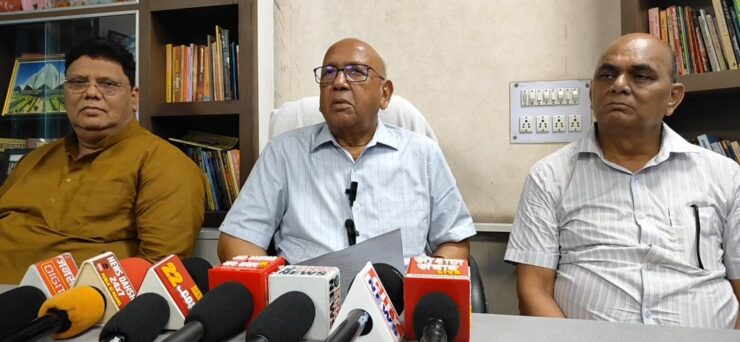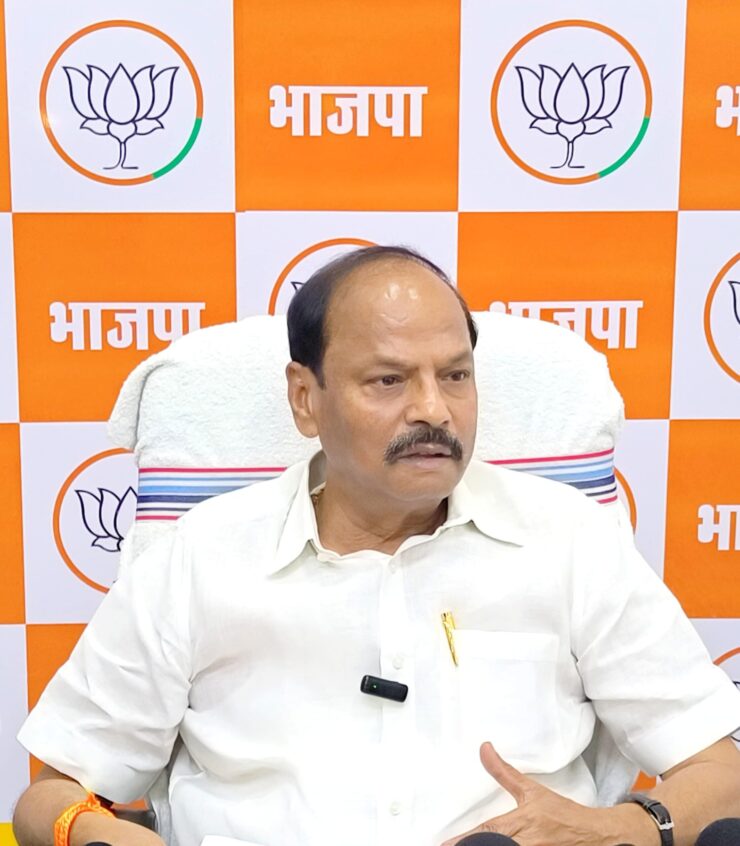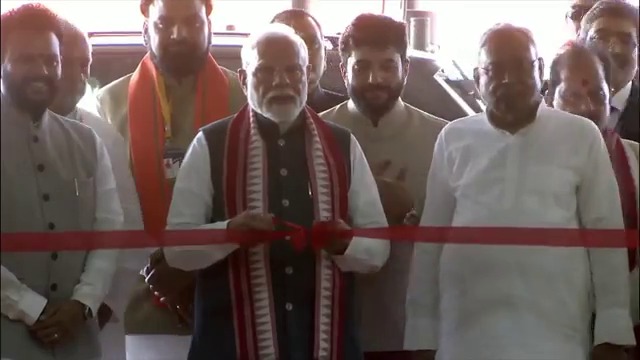
Jamshedpur


Observed every year on April 18, World Heritage Day is not just a celebration of monuments and architectural marvels—it is a reminder of the rich cultural heritage that binds generations together. Jamshedpur—India’s first planned industrial city—is a shining example of such legacy, a living testimony to the vision and foresight of Tata Steel and Jamsetji Tata.
The establishment of Tata Steel not only laid the foundation of an industrial revolution in Jamshedpur, but also fostered the creation of an inclusive, multicultural, and diverse society. This heritage is deeply rooted not only in the city’s streets and structures, but also in the shared culture of Jharkhand and Odisha.
Of special significance is Tata Steel’s historical connection with the Mayurbhanj princely state of Odisha, from where the first supplies of iron ore began. The Noamundi mines, which started operations in 1925, continue to stand—100 years later—as a symbol of Tata Steel’s enduring legacy and industrial strength.
As we observe World Heritage Day today, let us revisit the many historic landmarks in and around Jamshedpur—sites that continue to embody the city’s legacy, architectural beauty, social harmony, and industrial pride—while connecting future generations to its remarkable past.
1. Tatanagar Railway Station | 1891
Tatanagar Junction Railway Station is more than a century old. Established in 1891 as Kalimati Station after Sakchi was identified as the ideal location for the TISCO Steel Plant, the station underwent expansion in 1910. In 1919, it was renamed Tatanagar in honor of Jamsetji N. Tata, the founder of the Tata Group. In 1961, the station was renovated with the addition of a main platform and four additional platforms.
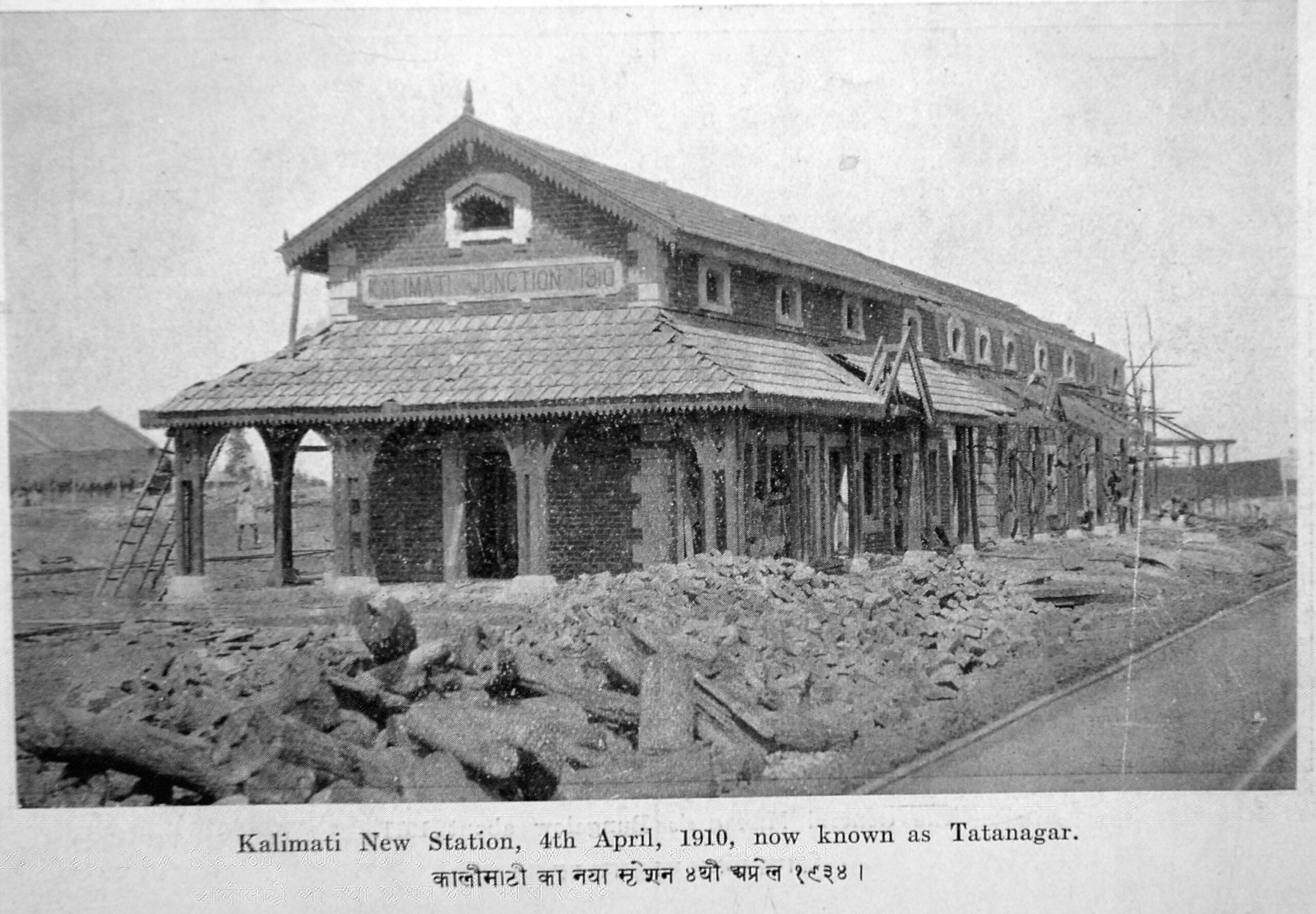
2. Water Works | 1908
The Water Works were established in 1908, with the initial construction led by Mr. Godbole and later completed by Mr. Renken. A 1,200-foot-long weir and a powerful pumping station were built on the Subarnarekha River to facilitate water supply. Additionally, a reservoir in a natural valley and a half-mile-long dam were constructed. By 1910, the plant was ready and had the capacity to pump one million gallons of water per day. The Patterson Purification Plant began operations in 1921, and by 1996, the capacity had reached 37.0 MGD (Million Gallons per Day).

3. United Club | 1913
Established in 1913 in front of the Directors’ Bungalow, this club originally began as the TISCO Institute to promote social interaction and recreational activities. Equipped with modern amenities such as tennis courts, a bowling alley, a billiards room, and a grand concert hall, it became a symbol of community unity. In 1948, after merging with the Chhota Nagpur Regiment (CNR) Club, which was located where Loyola School stands today, it was renamed the United Club.
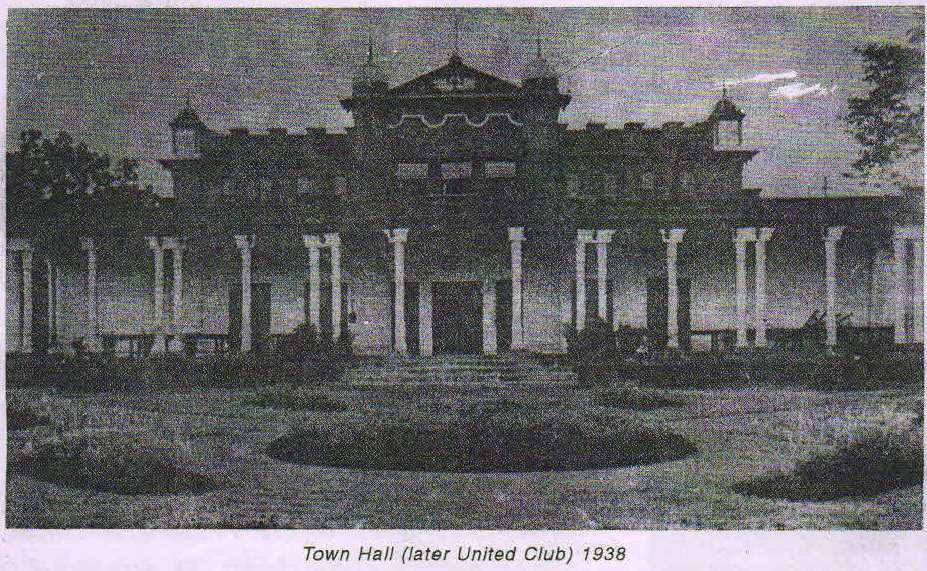
4. Keoke Monroe Perin Memorial School | 1915
Mrs. Keoke Monroe Perin Memorial School (KMPM) was established on June 21, 1915, in Jamshedpur. It was the city’s first school, named in honour of Mrs. KOK Monroe Perrin, the wife of Charles Page Perrin, who supported the establishment of the TISCO Plant. Initially, the building served as a courthouse before being converted into a school. Hindi and Bengali were the primary mediums of instruction. Within three years, the school expanded to include primary, middle, and high school sections for girls. 
5. St. George’s Church | 1916
The foundation stone of St. George’s Church was laid on December 28, 1914, and the church was completed on April 16, 1916. It was built on land donated by Sir Dorabji Tata for the Christian community. By earmarking specific places for temples, mosques, churches, gurudwaras, and monasteries,

6. Madrasi Sammelani | 1917
The Madrasi Sammelani was established in 1917 on J Road, Bistupur, to serve the cultural needs of the Tamil-speaking community that had migrated to Jamshedpur during the early days of the TISCO plant’s development. The Sammelani functioned as a cultural hub, not only preserving Tamil traditions but also actively promoting Tamil culture within the city. It played a crucial role in fostering a sense of identity and community among Tamil residents in Jamshedpur. 
7. Director’s Bungalow | 1918
Constructed in 1918, this grand bungalow served as a key operational centre during the formative years of Tata Steel. It has hosted eminent personalities, including Sir Dorabji Tata and Pandit Jawaharlal Nehru, during their visits to Jamshedpur. The bungalow features eight spacious rooms, a dining hall, a card room, and lush green lawns, reflecting colonial-era elegance and the stature of its guests.

8. Shavak Nanavati Technical Institute (SNTI) | 1921
Originally established as the Jamshedpur Technical Institute on November 1, 1921, with 23 students, the institution aimed to provide skilled training in metallurgy, maintenance, and industrial economics. It housed four classrooms, two halls, and two offices. On April 2, 1992, it was renamed the Shavak Nanavati Technical Institute (SNTI) in honor of its first alumnus, Shavak Nanavati, who served as Managing Director of Tata Steel from 1970 to 1992 and played a key role in the growth of both the institute and the Company.
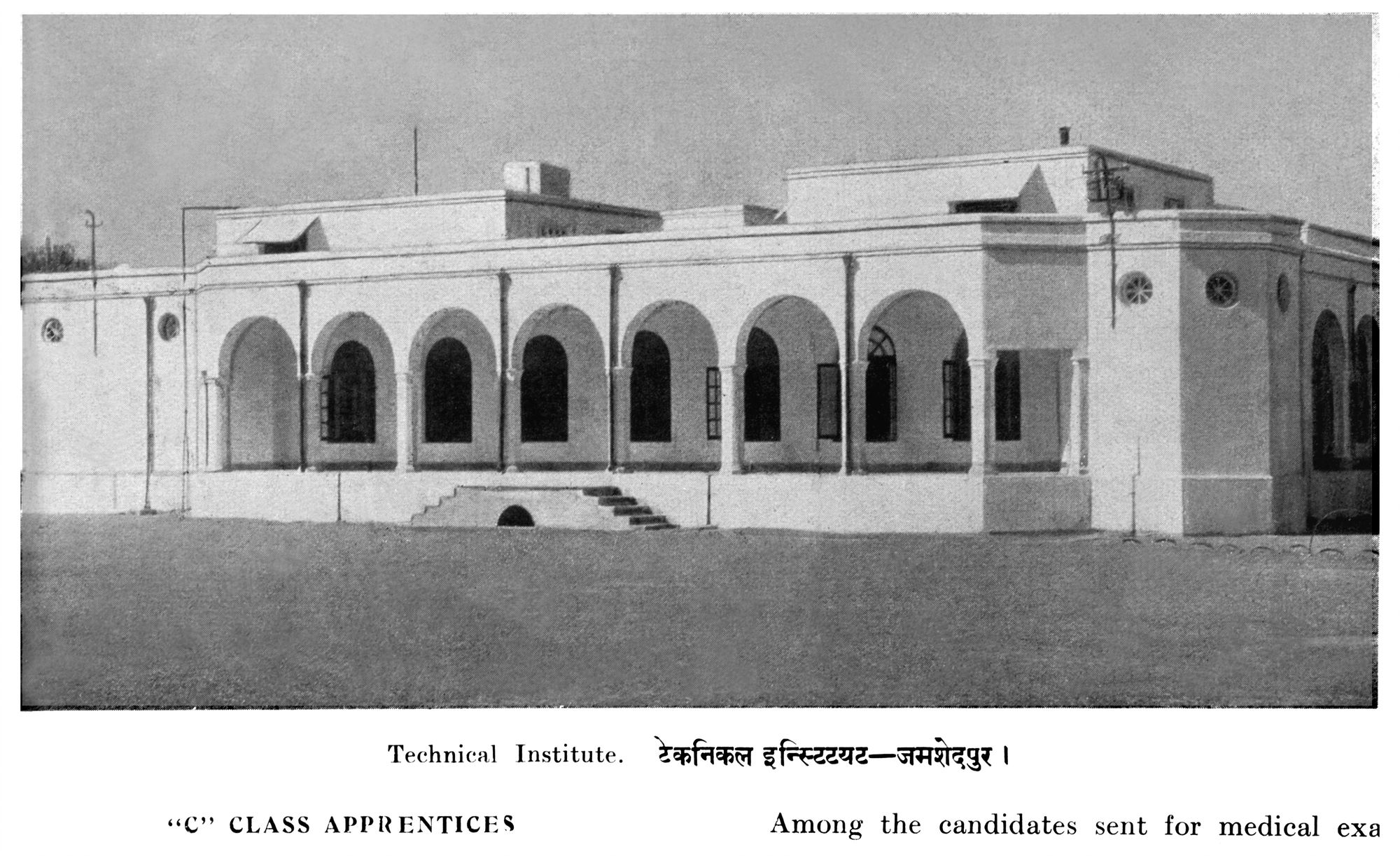
9. Beldih Baptist Church | 1923
With the establishment of the TISCO plant in the early 1900s, families from across India and abroad began settling in Jamshedpur. To cater to the spiritual needs of the growing Baptist community, the American Foreign Baptist Mission Society acquired land from TISCO and built the Church of Christ and a parsonage at Beldih Triangle in 1923. Later, when employees of the Henry J. Kaiser Company (USA) arrived in Jamshedpur with their families to assist in TISCO’s 2-million-ton expansion project, the Beldih Church School was founded in 1954 to meet their children’s educational needs.
10. Kalibari | 1932
The Beldih Kalibari temple was established in December 1932 by Pandit Bhupaticharan Smrititirtha. It has served not only as a religious and spiritual hub but also as a center of grand Durga Puja celebrations for decades. The idol of Goddess Durga housed here is believed to be one of the largest and most captivating in Steel City, drawing countless devotees and visitors each year. 
11. Bharucha Mansion | 1935
Built in 1935 by Khurshed Manekji Bharucha, the first Indian Chief Cashier at TISCO, the Bharucha Mansion is a unique four-story, multi-angled building made of steel and bricks. The internal partition walls were constructed using a mixture of surkhi (burnt clay powder) and bricks, resembling the design of the Tata Steel General Office. Initially, the mansion served as a hostel and lodge for the Parsi community. In the 1950s, part of the mansion was transformed into Regal Talkies, the first grand theatre complex in Jamshedpur. 
12. Research and Development Building | 1937
The Research and Development (R&D) Building was inaugurated in 1937 by Sir Nowroji Saklatvala, then Chairman of Tata Steel, and Bharat Ratna Sir M Visvesvaraya. Designed to ensure both efficiency and comfort, the building placed special emphasis on providing a safe and healthy work environment for employees. The room layouts supported smooth workflow, with all utilities routed through underfloor ducts. Safety features included a smoke extraction system, emergency showers, and specially designed switchboards.

13. Clock Tower | 1939
Standing 70 feet tall with four curved clock faces, the Clock Tower was built by the Anglo-Swiss Watch Company and inaugurated on March 4, 1939, by the Tinplate Company of India Limited (TCIL) in honour of its first General Manager, John Leishon, for his 16 years of service. Located on the Golmuri Club’s golf course, the tower served as a prominent timekeeper for the city for decades. Though the clock stopped working in 1994, it was restored and rededicated to the city on Founder’s Day, March 3, 2014. The Golmuri Club now maintains the tower, which complements the beauty of its 18-hole golf course.
14. Keenan Stadium | 1939
Keenan Stadium was built in 1939 and named after John Lawrence Keenan, who served as General Manager of TISCO from 1930 to 1945. It became one of the most prominent cricket venues in the region, hosting 10 international matches, the first being the India vs. West Indies match in 1983. India won only one match here, against South Africa. This multi-purpose stadium has also hosted several Ranji Trophy matches for the Bihar (now Jharkhand) cricket team. In earlier years, it was equally known for its football matches.

15. Boulevard Hotel | 1940
Constructed by Bartholomew D’Costa, who came from Goa, the Boulevard Hotel was built in just six months to host British and American soldiers during World War II. It served as a key hospitality centre for allied troops during the war. The hotel’s original architecture still reflects the charm of that era.

16. Armoury Ground | 1941
On September 15, 1941, the 1st Battalion of the Bihar Regiment was formed at Golmuri Lines, Jamshedpur. Tasked with protecting the TISCO plant from Japanese air raids, the regiment played a vital role during World War II. During Viceroy Lord Wavell’s visit, a locally developed anti-aircraft gun was demonstrated in Northern Town. The location where Lt. Col. Tweed, the commanding officer, showcased the armoury came to be known as Armoury Ground. Today, it remains one of Jamshedpur’s oldest sports fields, still hosting both amateur and professional sporting events.

17. Sacred Heart Convent School | 1945
Sacred Heart Convent School was founded on January 15, 1945, by the Congregation of the Apostolic Carmel Sisters. Initially located at 5, Beldih Triangle, the school later moved through several locations—CNR Hall, Dhatkidih High School, and Dalma Villa. After Tata Iron and Steel Company allotted land on Park Road, Northern Town, the new school building was inaugurated in January 1951. The school sent its first matriculation batch in March 1952. After affiliating with the Council for the Indian School Certificate Examinations in 1963, students appeared for the ISC examination in 1965.
18. Durrell House
The Durrell House is the birthplace of world-renowned author and wildlife conservationist Gerald Malcolm Durrell, born on January 7, 1925. This colonial-era bungalow stands as a living tribute to Durrell’s legacy and reflects Jamshedpur’s architectural and cultural heritage from the colonial period. 
19. Proctor House
Proctor House is a symbol of Jamshedpur’s industrial and social heritage. E.A. Proctor, who lived in the city from 1919 to 1934, led the construction of key Tata Steel units such as the Battle Blast Furnace and Sheet Mill, catalysing the Company’s expansion. His wife, Mrs. Proctor, empowered local Christian widows by training them in embroidery and sewing, helping them become self-reliant. This historic residence was named ‘Proctor House’ in honour of their combined contributions.
These historic landmarks of Jamshedpur not only enrich the city’s legacy but also remind us that true development lies not just in constructing buildings, but in keeping history alive. On this World Heritage Day, let us pledge to preserve these sites and safeguard this rich heritage for the generations to come.



